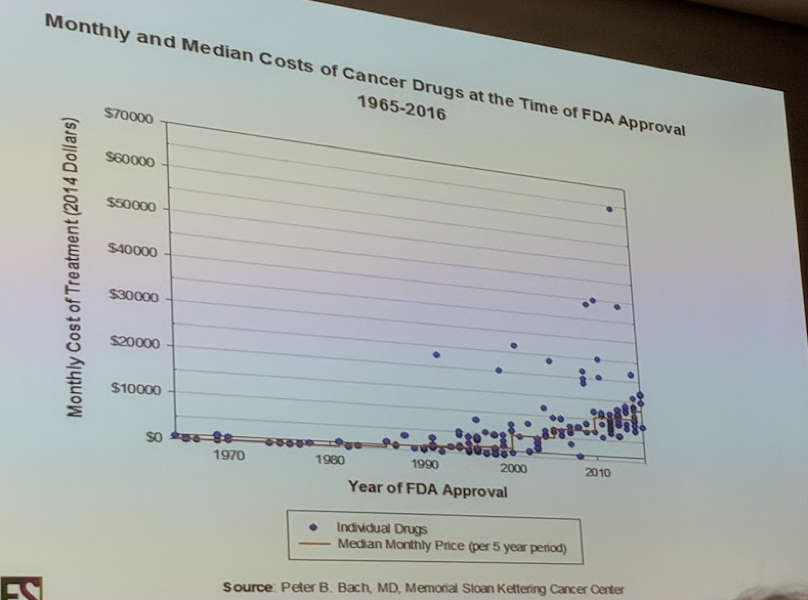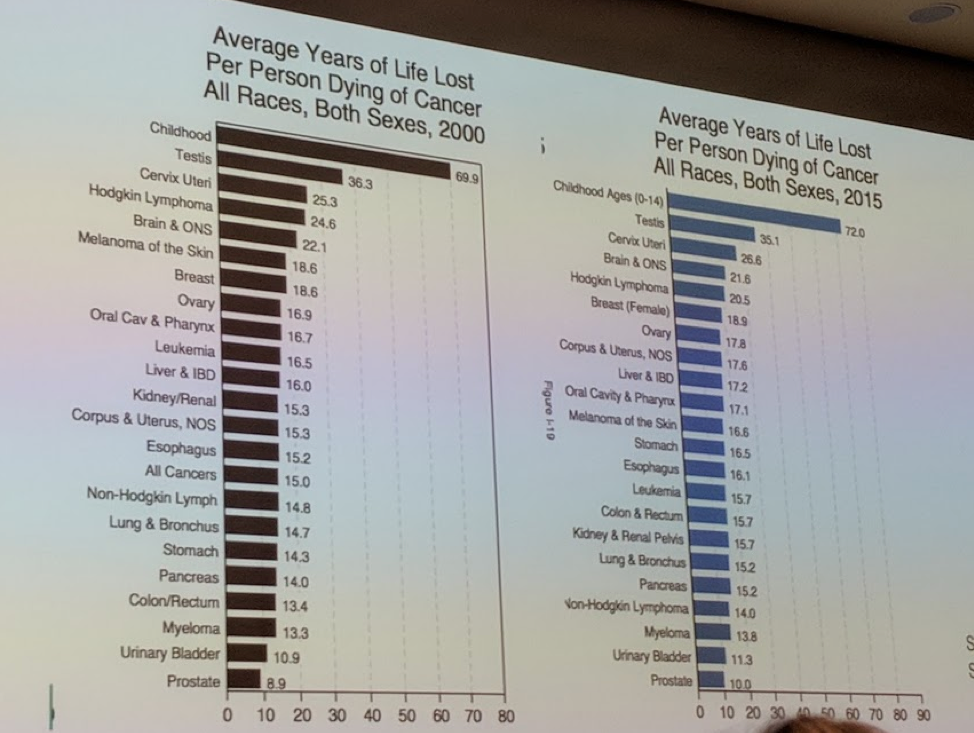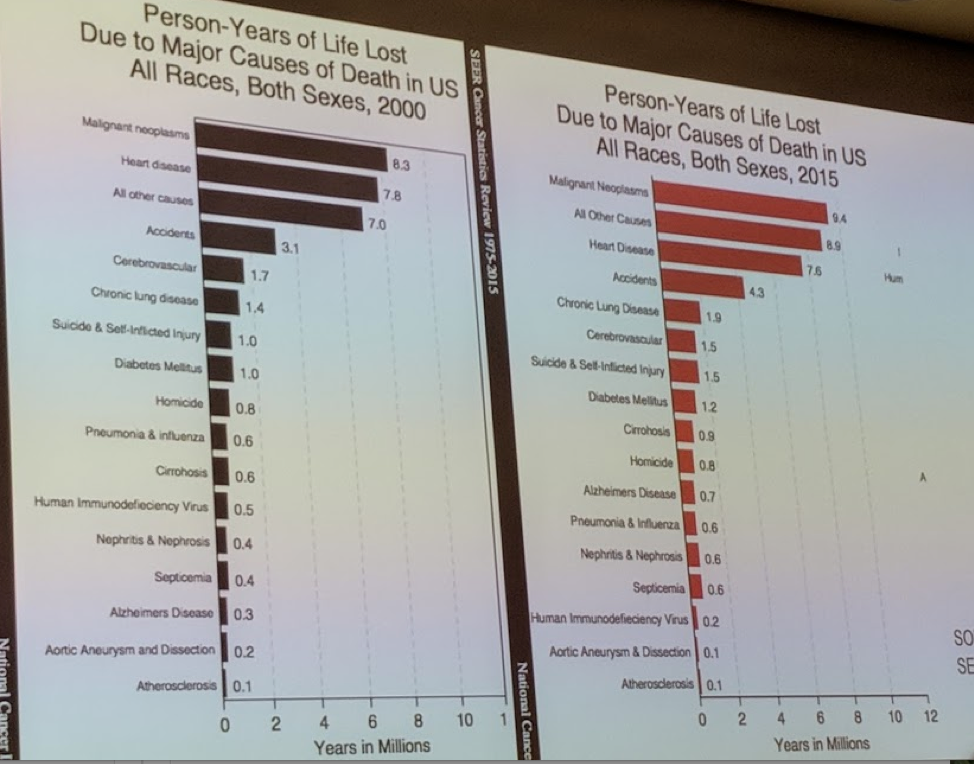How do we define “success” in the global fight against cancer? Unfortunately, success can be defined many ways depending on viewpoint.
First, looking at 5-year relative survival rates from 1973-2013 in the SEER database (an American cancer registry), it would appear that we are doing much better across all cancer sites – survival rates appear to have significantly improved for all cancer types.
- However, what this fails to capture is that this is primarily driven by increasing diagnosis of early-stage cancers
- If we diagnose cancers earlier, the 5-year CSS rates improve as the population gets enriched by patients at earlier stages
- However, patients with later stages, the 5-year CSS has not really changed that much
- Lead-time bias is often not accounted for
That, in turn, has translated into rising healthcare costs. This following diagram depicts how the monthly costs of cancer drugs has now exceeded the monthly median household income – which means that cancer healthcare is no longer affordable!


These are very sobering statistics and a sign of the wrong direction that our healthcare is heading towards.
What about cancer diagnoses and incidence? Are we making any impact?
The predicted global incidence and cancer deaths will continue to increase through the next 20-30 years, as predicted. In addition, the burden of cancer has continued to grow over the past few decades.
His last set of points was a focus on the “most important metric that no one looks at” – person-years of life lost due to cancer.
Over the past 15-years, the average life-years lost per person dying of cancer has increased, especially for those patients with childhood cancers, but also for a few other major malignancies.

Compared to other causes of death, cancer has actually worsened – it is still the top cause, but the average number of years lost has increased to 9.4 from 8.3. Other causes have actually improved, including heart disease.

This was a very sobering talk regarding the overall cancer burden and progress we have made as a field. Perhaps we need a change of focus – rather than extremely expensive treatments for a small population of patients, we need better strategies for prevention and interventions that can impact a larger swathe of the population!
Presented by: Clifton Leaf, Editor-in-Chief, Fortune Magazine, New York, NY
Written by: Thenappan Chandrasekar, MD (Clinical Instructor, Thomas Jefferson University) (twitter: @tchandra_uromd, @TjuUrology) at the 2018 European Society for Medical Oncology Congress (#ESMO18), October 19-23, 2018, Munich Germany


